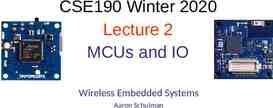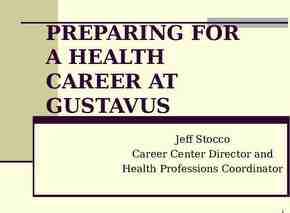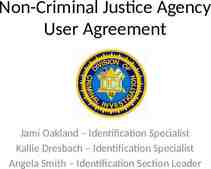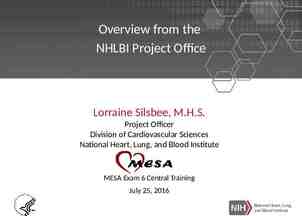Curriculum Technical Review Tips Fall 2006 Flex Workshop SDCCD
36 Slides1.12 MB
Curriculum Technical Review Tips Fall 2006 Flex Workshop SDCCD Instructional Services
Purpose & Goal The purpose of this workshop is to highlight specific areas of the curriculum approval process where we often run into problems during technical review at the Instructional Services Office. Our goal today is to address how to resolve these problems on campus before courses come to us for review; therefore speeding up the review process and getting the curriculum on the CIC agenda sooner.
Workshop Outline Information – For Originators and Curriculum Committee Members How to – For Originators CRC Review – For Curriculum Committee Members New Features - For Everyone
Information Differences between Pre-Launch & Launch Six-Year Review vs. Course Integration Course Number & Transfer Applicability Level Course Equivalency & Limitations on Enrollment English & Math Prerequisites for other disciplines Repeatability
Pre-Launch vs. Launch 1st Pre-Launch 2nd Launch Originators have two places in the approval process to take action. 1st is the initial Pre-Launch which sends the proposal to a group of people for a preliminary review. 2nd is after the preliminary review to Launch the proposal into the formal approval process. (The proposal will not advance if the originator does not Launch it.)
Six-Year Review vs. Course Integration Six-Year Review - The cycle by which the accrediting association requires courses to be reviewed for content, objectives, prerequisites, etc. Course Integration – The standard outline recommended by the State Academic Senates and adopted by the San Diego Community College District.
Course Number & Transfer Applicability Level The course number reflects the transfer applicability level. If the course number and transfer applicability level are not congruent, Instructional Services must contact the originator to clarify.
Course Numbering System 001 - 049 Basic Skills or college preparatory courses. Credit does not apply toward an Associate Degree nor does it transfer to a four-year college or university. 050 - 099 Course credit applies toward the Associate Degree but does not transfer to a four-year college or university. 100 - 299 Course credit applies toward the Associate Degree and credit is intended for transfer to a four-year college or university. (Some courses may be identified as Associate Degree.) Final decision in regard to transferability rests with the receiving institution. 300- 399 Apprenticeship and in-service courses. See Catalog course description to determine credit for Associate Degree or Transfer.
Limitations on Enrollment & Course Equivalency A course can not be taken if a student already has credit for another specific course, requires a Limitation on Enrollment. Sometimes a limitation on enrollment is needed because the other course is equivalent (50% or more of the content is the same and so is the unit value) to the first course.
Equivalency Example Equivalent Courses contain equivalent content and unit value. Equivalency Example: Biology 107 (4 units) Biology 105 (3 units) & 106 (1 unit)
Limitation on Enrollment Example Course content is similar enough that students shouldn’t take one course if they have previously taken another. The approach to the material may be different but content is the same. Example: CISC 151 not open to students with credit for CISC 152. One course covers the material at a more detailed level therefore a more general course should not be taken after the more detailed course. Example: BIOL 160 (Anatomy & Physiology) is not open to students with credit for BIOL 230 (Anatomy) or BIOL 235 (Physiology)
English & Math Prerequisites for other disciplines If a Math or English course is a prerequisite for a non-Math or non-English course then: a) b) A study must be conducted by institutional research to validate the need for the prerequisite in order for students to be successful in the course. (The course will be listed as an Advisory until the results of the study are concluded) OR The prerequisite must be a requirement from the CSU or UC system. Then a validation study is not required. If this is the case be sure to include in the “Need for Change” that the prerequisite is a CSU or UC requirement and attach a copy of the course description from the CSU or UC. (Documents can be attached to a proposal using the “Attach Documents” feature in CurricUNET.)
Course Repeatability Conditions for Repeatability: Content differs each time the course is offered And students who repeat the course are gaining an expanded educational experience for one of the following reasons: Skills or proficiencies are enhanced by supervised repetition and practice within class periods; Or active participatory experience in individual study or group assignments is the basic means by which learning objectives are obtained (Title 5, Section 58161) Courses that fall under these conditions are Activity, Studio Art and Performance Courses.
Repeatability – Activity Courses Course objectives (Student Learning Outcomes) and the Outline of Topics need to clearly define how the content differs with each repetition. If the course is also variable units then the Course Objectives (Student Learning Outcomes) need to specify what additional content is required for the various unit values.
Repeatability – Occupational/Vocational Courses Certain Occupational/Vocational Courses may be repeated if the Title 5 conditions apply and requirements are met. Course objectives (Student Learning Outcomes) and the Outline of Topics need to clearly define how the content differs with each repetition. Again if courses are variable units the Course Objectives and Outline of Topics need to specify what additional content is required for the various unit values.
Repeatability – Legally Mandated Training Courses which are used to meet legally mandated training requirements as a condition of continued paid or volunteer employment, may be repeated. These courses may be repeated for credit any number of times. (Our district’s policy is to put the 3 repeat limitation on the course, any additional repeats require certification by the student that repetition is necessary.) Be sure to indicate in the course description that the course may be repeated to meet legally mandated training requirements. Be sure to have documentation that the repetition is legally mandated in case it is needed.
How to for Originators: Select a college for an activation or deactivation proposal Fill out the “Need for Change” field Calculate hours and units for courses using total hours Enter Entry Skills and Match Objectives
Selecting a College Click on the Cover/ Description page A check mark means “offered at”. If deactivating at your college uncheck next to your college. If activating check next to your college
Importance of Need for Change Keeps the Board of Trustees abreast of the curricular trends at all three colleges Informs Instructional Services about important changes in curriculum early on in the approval process, which facilitates trouble shooting
Need For Change Define what has motivated you to make changes. Some possible reasons: A change in technology. A requirement from CSU or UC campuses to maintain our articulation. A new direction in a specific field that students need to keep them competitive in the job market.
Need for Change Example Need for Change: This course has been developed due to the growth and change in the hospitality industry, with many segments now considered to be professional areas or legitimate industries.
Hours to Units Ratio For Courses Using Total Hours Total lecture hours/18 unit value Total lab hours/54 unit value Unit values are in .5 unit increments and cannot be rounded up. If a course has both lecture and lab hours then add the unit values together to determine the unit value for the course.
Entry Skills Matching First step, type in Entry Skills. An Entry Skill is the basic knowledge base a student must have to be successful in a course. Example Entry Skill; “Need to read and write at college level.”
Entry Skills Matching Now that the Entry Skills have been added, the Outcomes can be matched to the appropriate requisite course by using the drop down menu. Select the Outcomes. It is possible to check off more that one Outcome for each Requisite Course.
Items for CRC to Review Program Impact Report Requested Effective Term Codes Required by the State Textbook Dates
Program Impact Report When modifying a course consider the implications on programs Good News: CurricUNET does this for you! The Program Impact Report will list the programs that are impacted by your changes
Program Impact Report Can be found on the left hand side of screen where all other reports are found Review programs on the report to verify what impact your proposal may have on degrees currently being offered
Program Impact Report Example
Requested Effective Term Check the proposals effective term. Has that term passed? Even though the effective term is already underway, do you want to teach this course in a short session? Do the revisions that are being made to the proposal include prerequisite changes? If so proposal effective date can only be in Fall.
Codes Required by the State TOP, SAM and Classification Codes Must be submitted to State Chancellor’s office for each course Are selected by the Dean of the Department – If Dean defaults, can only be added by Instructional Services Significantly speeds up approval process if these are present before they reach our office No Codes No Screens for Schedule Preparers to build sections
Textbook Dates Transferability – UC requires that textbooks be the most current edition or at least published within the last 5 years Technology – Keep books current to keep students competitive in today's job market
New Features Outline of Topics Formatting Tool Recent News on CurricUNET Homepage Users Group Conference
Outline of Topics Formatting displays as you type. Functions similarly to Microsoft Word. Ability to use superscript and subscript Written training materials on CurricUNET On-screen instructions
Recent News
Users Group Conference WHEN: Friday, October 27, 2006 TIME: 9:00 am to 4:30 pm WHERE: San Diego City College Room B103 Registration Fee: 25.00 (Includes Continental Breakfast, Hot Lunch, Afternoon Snack and all Conference Materials) Please make checks payable to San Diego Community College District and send to Instructional Services Attn: Laurie Van Houten
Information Laurie Van Houten - Curriculum Analyst Leticia Acosta - Administrative Technician (619) 388-6963 Instructional Services Website http://instsrv.sdccd.edu/ CurricUNET Website http://www.sdccdcurricu.net/sdccd2/









































